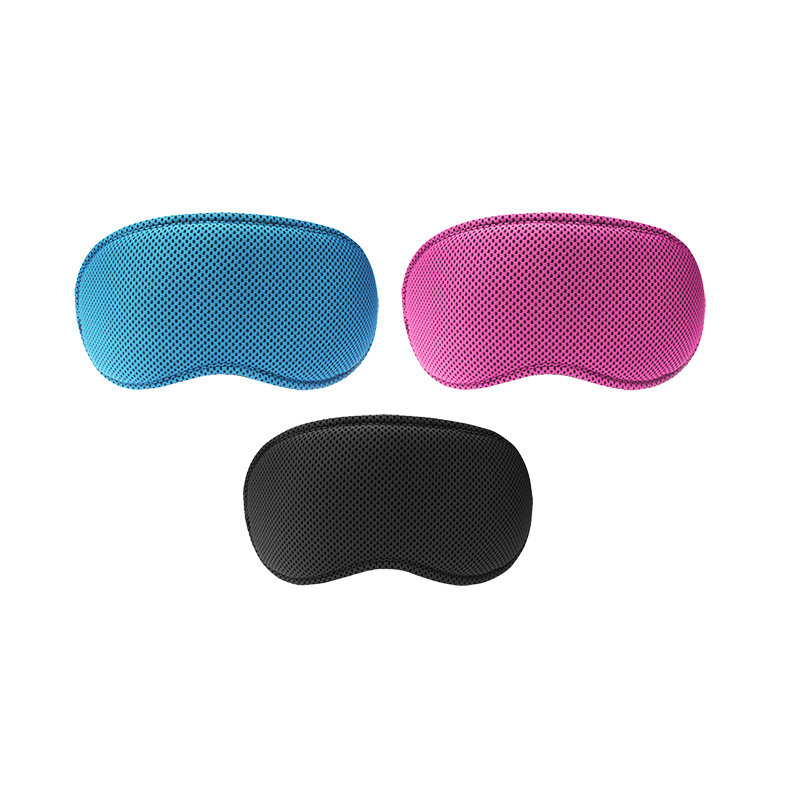Functional sleep eye masks have evolved beyond simple light-blocking tools to incorporate various advanced technologies designed to enhance sleep quality. Here’s a look at some of the key technologies integrated into modern sleep eye masks and how they contribute to better sleep:
1. Light Blocking and Circadian Rhythm Regulation
Total Darkness Technology
Features: Use of materials and designs that block 100% of ambient and direct light.
Benefit: Creates a pitch-black environment, helping to regulate circadian rhythms by promoting melatonin production, crucial for initiating and maintaining sleep.
Examples: Contoured masks with full coverage around the nose and eyes, masks with extra flaps or seals to prevent light leakage.
Blue Light Blocking
Features: Some masks integrate filters that specifically block blue light.
Benefit: Reduces exposure to blue light, which can interfere with melatonin production and disrupt sleep cycles.
Examples: Masks designed with special blue light-blocking materials or inserts.
2. Therapeutic Technologies
Cooling Gel Inserts
Features: Incorporation of cooling gel packs or pads within the mask.
Benefit: Helps in reducing eye puffiness, soothing tired eyes, and creating a cooling effect that can aid in relaxation and falling asleep.
Examples: Masks with removable gel inserts that can be refrigerated for added cooling.
Heating Elements
Features: Built-in heating pads or pockets for warm compresses.
Benefit: Provides warmth to relieve tension and stress, reduces dry eyes, and can help with sinus relief.
Examples: Masks with USB-powered heating elements or microwaveable inserts for gentle heat application.

3. Weighted Pressure Technology
Weighted Sleep Masks
Features: Use of small beads or weighted materials to apply gentle pressure across the face.
Benefit: Promotes relaxation through deep pressure stimulation, similar to the effects of a weighted blanket, which can help reduce anxiety and improve sleep quality.
Examples: Masks containing microbeads or glass beads distributed evenly for uniform pressure.
4. Sensory Integration Technologies
Integrated Sound Systems
Features: Built-in speakers or Bluetooth connectivity for audio playback.
Benefit: Allows the user to listen to calming sounds, white noise, or guided sleep meditations to facilitate relaxation and sleep.
Examples: Masks with Bluetooth headphones or integrated speakers that connect to a smartphone or other audio devices.
Aromatherapy Infusion
Features: Incorporation of essential oil diffusers or pockets for scent sachets.
Benefit: Provides the benefits of aromatherapy, using scents like lavender or chamomile to promote relaxation and improve sleep quality.
Examples: Masks with replaceable scent pads or pouches for adding essential oils.
5. Smart Sleep Monitoring
Sleep Tracking Sensors
Features: Integration of sensors that monitor sleep patterns, heart rate, and movement.
Benefit: Provides data on sleep quality, duration, and disturbances, helping users understand and improve their sleep habits.
Examples: Masks with embedded sensors that sync data to a smartphone app for detailed sleep analysis.
Biofeedback and Sleep Coaching
Features: Use of biofeedback sensors to measure physiological responses and provide real-time feedback.
Benefit: Helps users identify stressors and receive guidance on relaxation techniques to improve sleep.
Examples: Masks that offer personalized feedback and suggestions via connected apps.
6. Moisture and Temperature Regulation
Moisture-Wicking Fabrics
Features: Use of advanced fabrics that wick away moisture and promote airflow.
Benefit: Keeps the skin dry and comfortable, preventing overheating and improving sleep quality.
Examples: Masks made from fabrics like CoolMax or bamboo that offer superior moisture management.
Temperature Control Fabrics
Features: Use of phase-change materials (PCMs) or thermoregulating fabrics.
Benefit: Helps maintain a consistent, comfortable temperature by absorbing and releasing heat as needed.
Examples: Masks incorporating Outlast technology or similar materials that adapt to body temperature.
7. Customizable Fit and Comfort Features
Adjustable and Contoured Designs
Features: Customizable straps, ergonomic shapes, and contoured eye cups.
Benefit: Ensures a secure and comfortable fit, preventing the mask from shifting during sleep and enhancing its light-blocking efficiency.
Examples: Masks with adjustable Velcro straps, contoured eye cups, and memory foam padding.
Memory Foam Padding
Features: Integration of memory foam for enhanced cushioning and comfort.
Benefit: Provides a custom fit by conforming to the shape of the face, reducing pressure points and increasing overall comfort.
Examples: Masks with memory foam inserts that adapt to facial contours.
Functional sleep eye masks incorporate a variety of advanced technologies to enhance sleep quality through improved comfort, light blocking, sensory integration, and personalized sleep management. These innovations cater to different needs and preferences, making them an effective tool for achieving better, more restful sleep.











